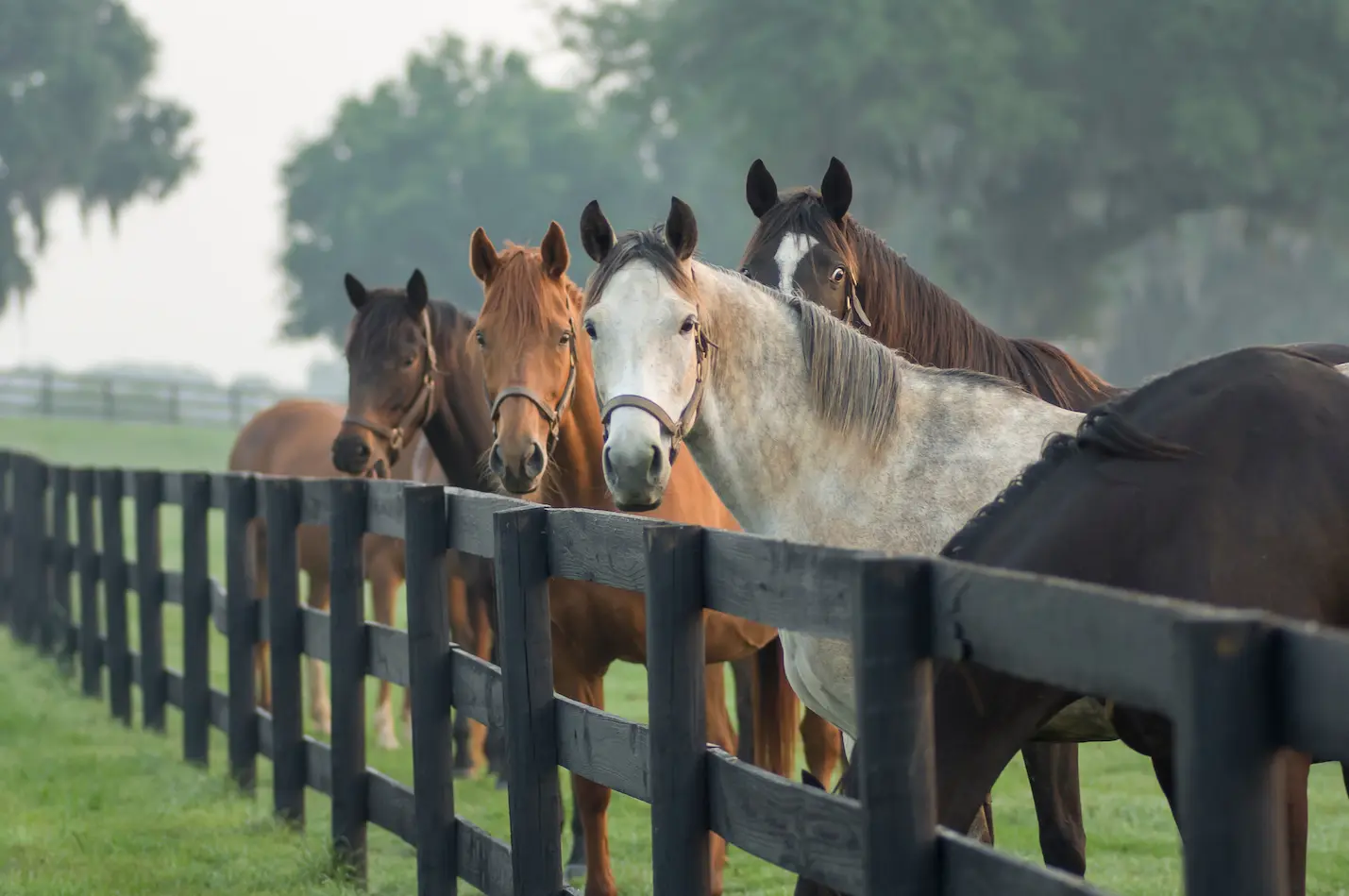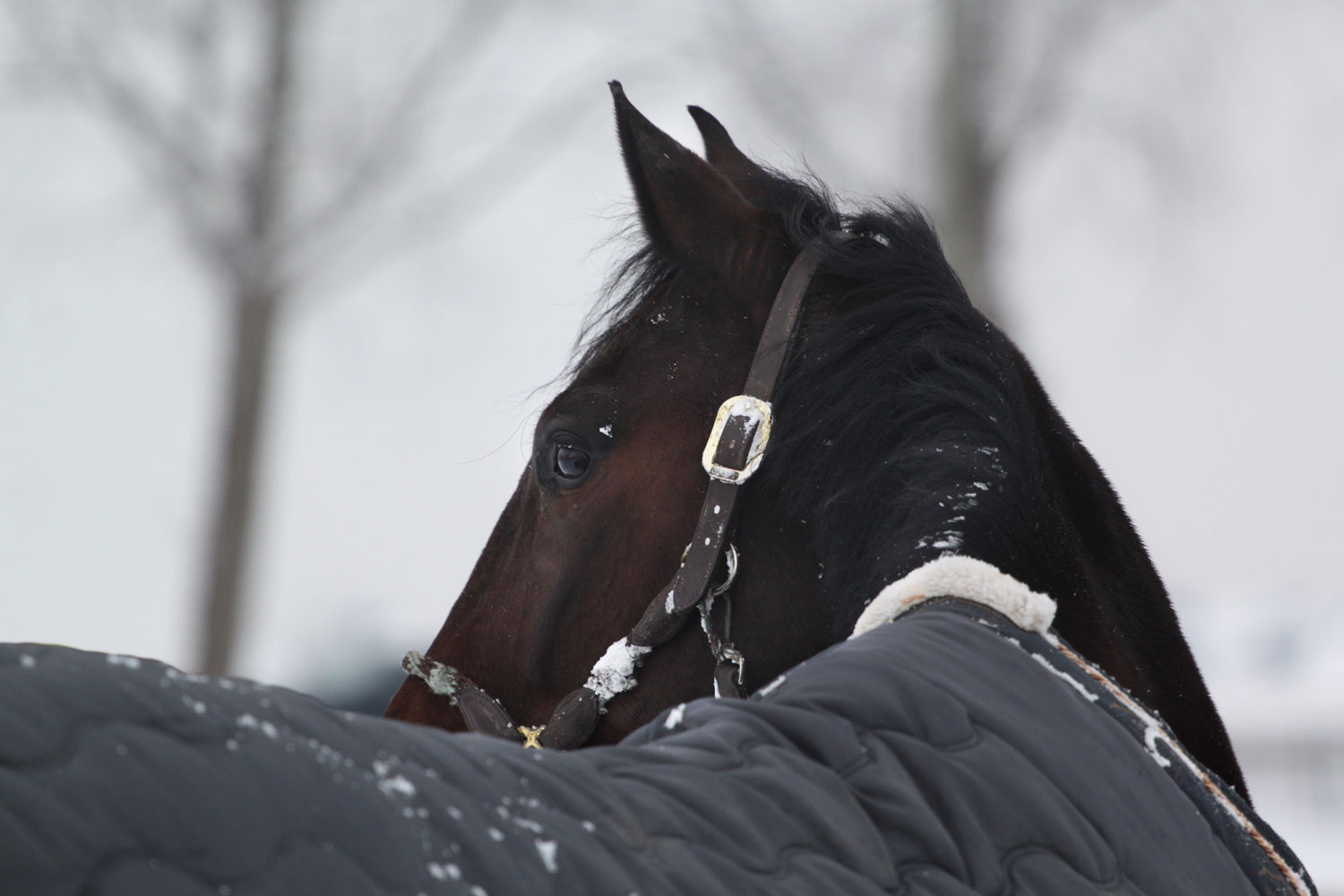Stereotypies, such as cribbing and stall-walking, are not found in wild horses, thus are likely a direct result of domestication and modern husbandry practices. While they may arise for a variety of reasons, these vices can be symptomatic of GI distress as well as of a stress reaction taking place in the horse’s brain. Keep reading to see how the gut and the brain work together to keep the horse’s immune system intact, and how the immune system in turn keeps the gut healthy and balanced.
The Gut-Brain Connection
During the horse’s development, both microbes and the immune environment help shape the growth and morphology of neurons in various brain sites, including the hippocampus and amygdala. Microbes have been proven to change the expression of the neurotransmitter GABA in the brain. Some of this change can be attributed to the vagus nerve, which connects the enteric nerve network to the horse’s brain (Bravo et al., 2011).
Microbes also produce precursors to neurotransmitters. A good example of this is Bifidobacterium, which can raise plasma tryptophan levels, affecting serotonin production in the horse (O’Mahony et al., 2015).
There is a complex bidirectional interaction between commonly used non-antibiotic drugs and the gut microbiome. Gut microbes can contribute to drug efficacy and safety by enzymatically transforming drug structure and altering drug bioavailability, bioactivity or toxicity. Insights into how the gut microbiome interacts with commonly used drugs enable interventions to modulate the gut microbiome and optimize treatment efficacy (Weersma et al., 2020).
What are Stereotypies?
In horses, gut-brain irregularities will often manifest themselves as repetitive stereotypies such as cribbing, biting, weaving and stall-walking. These behaviors are not found in wild horses, and therefore can be attributed to the effects of things like domestication, training, husbandry, etc.
Stereotypic behaviors are always repetitive in nature, and will show to be consistent over a length of time. Aside from being caused by GI issues, they can stem from many different factors and often a combination of multiple. These factors can include frustration, environment, genetics, boredom, travel, etc. Stereotypies can also be attributed to a dysfunctional nervous system.
What are Microbes?
Microbes are organisms that are too small to be seen without using a microscope. They include things like bacteria, archaea and sometimes even viruses—just about any cell that has a nucleus. There are microbes that make horses sick, and there are many more that are essential to a horse’s health. Beneficial microbes are called “commensal” microbes. They form a kind of community commonly known as the microbiota, which serves to protect the horse from pathogens. It does so by outcompeting, starving and chemically killing them. Thus, it is essential for a horse to have a strong, healthy microbiota. The equine colon and cecum can hold about 120 liters containing 1015 (one quadrillion) bacterial cells, along with fungi, viruses, protozoa and helminths.
Horses require high numbers of microbes to help break down feed such as grass into absorbable nutrients. This fermentation process supplies the horse with over two-thirds of its energy needs. Therefore, the health and fitness of a horse’s microbiota is absolutely essential to the overall health of the horse (Venable et al., 2016).
There are thousands of different microbial species located throughout the microbiota, each with thousands of genes of their own. Each gene codes for a specific protein or enzyme and these make up almost half of the freely circulating metabolites in the horse. These enzymes are necessary to digest and utilize the structural fiber in forage. Without the power of these important microbial genes, equine life would be impossible.
A horse’s gut linings are thin, unlike their hide. As a result, the most common way for a pathogen to enter a horse’s system is through the gut lining. It is for this reason that 80% of a horse’s immune system is devoted to regulating the GI tract. The natural environment of immune cells is the lymphatic system, which is also located within the gut of the horse. Lymphatic vessels reach into each of the billions of villi coating the intestines, as well as connect a vast network of lymph nodes. Due to this, there is a massive link between the horse’s entire immune system and its gut microbiota.
The Relationship Between the Two
Recent studies have shown that there is a strong connection between stereotypies and microbes. Perhaps most importantly, it has been demonstrated that microbes can have a stronger correlation to stereotypical behavior than even a horse’s genetics does (Mach et al., 2020). This is due, in part, to stress-activation of the HPA axis which results in increased gut permeability and consequent changes in the composition of the gut microbiota (Slyepchenko et al., 2016).
The horse’s immune system must therefore be able to adjust itself to give symbiotic (beneficial) microbes a pass, so long as they stay in the lumen of the GI tract. The immune system must also teach itself about gut microbes gifted by the foal’s dam, in order to be able to recognize them should they escape the gut. This delicate balancing act must take place early in the foal’s development, or its immune system could be dysregulated for life.

Staying in balance
The feedback loop between the microbiota and the immune system establishes an effective homeostatic control of the gut, allowing massive amounts of fermentative bacteria to thrive while simultaneously discouraging pathogens. But stressors like anthelmintics, antibiotics, trailering, and high-energy feed can upset the balance. They can tip the immune system into hypervigilance or systemic inflammation with a pathological effect on every organ in the horse’s body, which may manifest as stereotypies among other clinical signs.
Managing this balance is tricky but can be enhanced by cutting down on stress and boosting the health of the microbiota through supplementation with appropriate prebiotics. All-natural prebiotics can safely improve existing populations of commensals by working within normal GI parameters. Plant-based prebiotics like beta glucan have been shown to improve both gut and immune health. To heal damaged epithelial tissue lining the gut, microbially produced butyrate and supplemental glutamine are valuable. To enhance the mucus layers degraded by chronic cortisol surplus, threonine is recommended.
One practical method of introducing prebiotic nutrients into the horse’s diet is adding SUCCEED Digestive Conditioning Program to the feed regimen. SUCCEED is a once-daily nutritional supplement program containing beta glucans from oat and yeast sources, as well as oat polar lipids, amino acids, and mannan oligosaccharides from yeast.
Download the White Paper for More Details
Download our latest white paper on the gut and the immune system for a more in-depth look at the partnership between immunity and digestive health.
References:
Bravo, J. A., Forsythe, P., Chew, M. V., Escaravage, E., Savignac, H. M., Dinan, T. G., Bienenstock, J., & Cryan, J. F. (2011) Ingestion of Lactobacillus strain regulates emotional behavior and central GABA receptor expression in a mouse via the vagus nerve. Proceedings of the National Academy of Sciences 108 (38), 16050–16055. https://doi. org/10.1073/pnas.1102999108.
Mach, N., Ruet, A., Clark, A., Bars-Cortina, D., Ramayo-Caldas, Y., Crisci, E., Pennarun, S., Dhorne-Pollet, S., Foury, A., Moisan, M., et al. (2020) Priming for welfare: gut microbiota is associated with equitation conditions and behavior in horse athletes. Sci. Rep. – UK 10 (1). https://doi.org/10.1038/s41598-020-65444-9.
O’Mahony, S. M., Clarke, G., Borre, Y. E., Dinan, T. G., & Cryan, J. F. (2015) Serotonin, tryptophan metabolism and the brain-gut-microbiome axis. Behav. Brain Res. 277, 32–48. https://doi.org/10.1016/j.bbr.2014.07.027.
Slyepchenko, A., Maes, M., Jacka, F. N., Köhler, C. A., Barichello, T., McIntyre, R. S., Berk, M., Grande, I., Foster, J. A., Vieta, E., et al. (2016) Gut microbiota, bacterial translocation, and interactions with diet: pathophysiological links between major depressive disorder and non-communicable medical comorbidities. Psychother. Psychosom. 86 (1), 31–46. https://doi.org/10.1159/000448957.
Weersma, Rinse K, et al. “Interaction between Drugs and the Gut Microbiome.” Gut, BMJ Publishing Group, 1 Aug. (2020) https://gut.bmj.com/content/69/8/1510.




